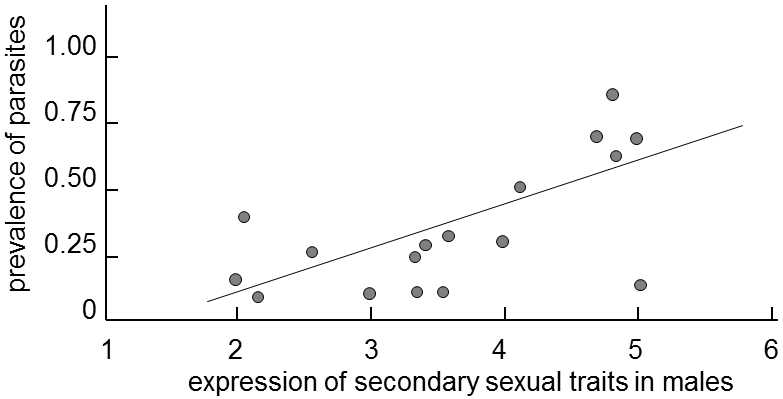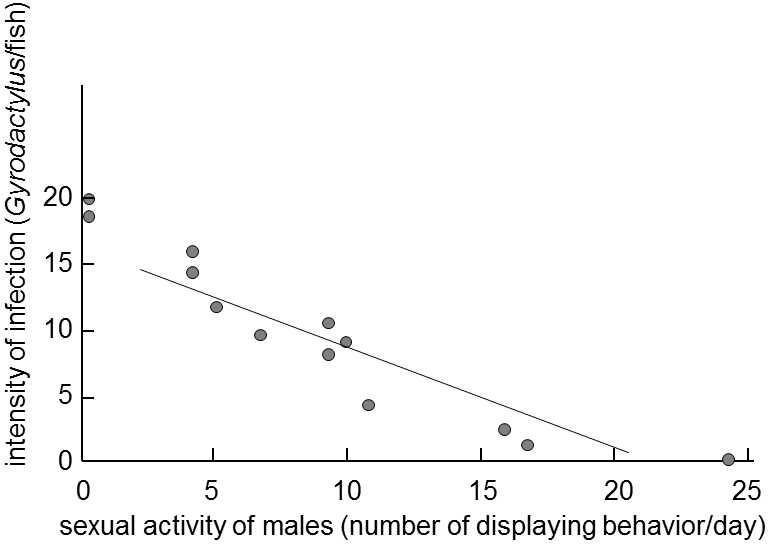XV.5.5.8 Secondary sexual traits can reflect the level of parasitization
The best-known variant of the indicator hypothesis assumes that the degree of expression of secondary sexual traits is negatively correlated with the degree of infestation of the individual by parasites (Hamilton & Zuk 1982). Thus, if the female chooses a male with striking secondary sexual traits, she is also selecting an uninfested individual.
The hypothesis has been verified with variable results in intraspecific and interspecific comparative studies. If it were to hold, then the individuals in a single species with the most well-developed secondary sexual traits should be least infected. To the contrary, in the framework of a higher taxon, the species exhibiting the greatest level of sexual dimorphism should act as hosts for parasites most frequently.
It has been observed in interspecies comparative studies that the expected positive correlation between the level of infestation of the species by parasites and the level of their sexual dimorphism holds for tropical birds, North American perching birds and British fish (Hamilton & Zuk 1982; Read 1998; Read 1988; Zuk 1991) (Fig. XV.12). In intraspecific studies, the expected negative correlation

Fig. XV.12 The effect of parasites on secondary sexual traits in males – interspecies comparative study. Amongst North American song birds, males of species that also have the greatest prevalence of parasites exhibit the greatest expression of secondary sexual traits. Data from Read (1988), modified according to Combes (2001).

Fig. XV.13 The effect of parasites on the sexual activity of males – intraspecies comparative study. Amongst guppy males (Poecilia reticulata), a negative correlation has been found between sexual activity, consisting in displaying secondary sexual traits (coloration and patterns) to females and the number of ectoparasitic helminths of the Gyrodactylus family. Data from (Kennedy et al. 1987), modified according to Combes (2001).
between the level of infestation of a certain individual by parasites and the level of expression of his secondary sexual traits has been observed. At random, we can mention the negative correlation between the number of parasitic mites on the body and the length of the tail feathers in swallows (Moller 1990)and the number of parasitic nematodes and the size of the crest in red junglefowl (Zuk, Thornhill, & Ligon 1990); at the same time, similar observations have been made for insects, fish and reptiles (Fig. XV.13).
However, it should be mentioned that a number of studies have yielded negative or the opposite results (Read & Harvey 1989; Zuk 1989). In addition, it can be assumed that the conclusions of a great many works that yielded a negative result, i.e. did not demonstrate any correlation between secondary sexual traits and infestation by parasites, have not even been published.
